The sugar confectionery industry is finding ways to weather the storm of a nation looking for someone to blame for the state of children's health, says Kate Miller
Buying sweeties on the way home from school used to be such a simple affair. Your mum would give you 10p, you'd go in, choose a few items and eat them after tea. But for the past few years it hasn't only been the prices that have changed. Paranoia about our nation's children swelling to Augustus Gloop proportions has been felt hard in the sugar confectionery industry as this sector bears its share of public concern.
Says Swizzels Matlow associate consumer director Andrew Matlow: "There aren't many confectionery manufacturers that could say that the past couple of years have been easy. There's been an awful amount in the media about childhood obesity and kids' teeth. It seemed to come to the fore in the past couple of years, especially with the Jamie Oliver effect, which made parents sit up."
He says that while he agrees with much of what Oliver says, he thinks the confectionery industry was unfairly targeted in the fallout: "If you look at the amount of confectionery eaten today as opposed to the past 10 or 20 years in tonnage terms, it's probably less, and that means that kids aren't necessarily getting obese by consuming confectionery. And it's calorie in, calorie out. Kids today don't have the chance or aren't interested in taking the opportunity to burn calories off."
Hancocks purchasing director Richard Brittle agrees: "We consume fewer calories now than we did in 1945 - it's not sweets that are causing obesity. Kids sit in front of the telly and drink more carbonates. There are more cars, less PE at school. Food politics are a real problem to me. Everything in moderation - moderate exercise, moderate food. You can ban advertising but where are all the 'get on your bike' messages - don't just say 'don't do that' say 'do this'."
Matlow believes the problem has a lot to do with lack of exercise: "The government has addressed one point, but hasn't addressed kids sitting in front of computer games and TV."
However, he predicts that the tide will turn: "I do believe that 2007 may be a turning point. There seems to be a more positive and better understanding from parents and a redress in the balance. We as a company tried to bring out sugar-free products, but they didn't work in the UK for children. One of the reasons is that sweets should be consumed, enjoyed and given as a treat. When we've got a proper sense of perspective back in confectionery we will get back to that fact that they can be enjoyed as part and parcel of a balanced diet. And I speak as a parent."
But there is no doubt there is a market for sweets with fewer calories and reduced fat content, partly due to the fact that adults like sweeties, too. Haribo managing director Per Henerius says that the company is targeting a slightly older audience of teens and young women with its new launch, Haribo Lites, which contain 30% fewer calories, 40% less sugar and less than 0.1% fat per 100g. The sweets are available in 25g bags with a rrp of £1.07 and contain no artificial colours. The range includes combinations of fruit and plant concentrates including lemon, apple, redcurrant, elderberry, spinach, nettle and safflower.
Henerius says: "There is a marked switch out of hard candy and chocolate to gums and jellies, and what's underpinning the move is the fact that they are virtually fat free."
While he doesn't think the category will explode as a market, "it is there as an option". But he points out: "At the end of the day, Haribo is a treat, it is not a meal replacement. Haribo has been established as a brand for 40 years in the UK. The second generation has grown up with the brand. It was a natural step for us to look at the young adult."
Hancocks has also launched a Lite range of weighout sweets containing 30% fewer calories, 40% less sugar and less than 0.1% fat per 100g. The range includes wine gums, jelly bears, cola bottles and fruit salad. Brittle says he thinks that low-sugar products are far more likely to succeed than sugar-free. "People still think sugar-free is going to give them problems if they eat too much of it," says Brittle, alluding to the alleged laxative effect of some products.
As well as the low-fat/low-calorie message, other companies are looking at their ingredients and creating a trend over the past few years for NAFNAC (no artificial flavours, no artificial colours). Brittle says: "Nestlé did really well with Smarties by going down the NAFNAC route."
Last year Haribo took out the artificial colourings from Starmix and Henerius says that by this month most of its products will not feature any artificial colouring. At the same time, the company has increased the proportion of real fruit juice in its fruit juice brands.
Another company looking closely at its ingredients is Walkers Nonsuch, which has removed all hydrogenated vegetable oils from its products. The toffee has no artificial colours, preservatives or flavourings, either. Walkers Nonsuch sales and marketing manager Emma Walker says: "Obviously, toffee isn't a healthy product, but all our ingredients are natural and we're proud to say we use full-fat sweet condensed milk rather than skimmed, and we use butter. It's an indulgent treat and everybody likes a treat."
Tangerine Confectionery also followed the pack by taking out the added-salt element of its Chocolates and Crumbly Fudge, which also contain no hydrogenated fats and only natural colours and flavouring.
A company which has repositioned itself as a 'healthy confectionery company' is Leaf. It has expanded its Red Band range with Sweet Enoughs, sugar-free strawberry gums and orange & lemon sugar-free boiled sweets. Both come in flip-top boxes, rrp 60p.
However, all this new product development may be in jeopardy when new advertising regulations come in. Haribo's Henerius says his company has the benefit of being an established brand and has already adopted the new guidelines ahead of implementation, but fears others may not fare so well: "The inability to use TV advertising to establish a new brand among younger consumers will make it much more difficult for new products to gain a foothold in the marketplace and, as a result, the existing big brands will continue to grow bigger and bigger."
According to Brittle, though, sugar confectionery is an area where retailers can afford to look beyond the big brands: "By all means stock the major brands, but then go and play about. Selling just the top brands gets boring. Why do people go into independents? If you believe the big guys it's distress purchase and no other reason. Well, why aren't they going in there for something different? Confectionery shouldn't be boring. If you go down that route all the multiples sell it and sell it cheaper. Let's get the excitement back into confectionery."
He says that two of Hancocks' top 11 lines are Brain Licker and Candy Spray - which weren't far off Mars Bar sales for the cash and carry. "People say 'I haven't seen those in years' and buy them for their kids. I think that's why they do so well."
Masterfoods trade relations manager Andrea Taylor says that retailers need to understand that sugar confectionery customers have a different outlook from chocolate customers: "The sugar market tends to be less loyal. There are more than 3,700 lines in sugar and everything needs to earn its place on the shelf."
New from Masterfoods is liquid-filled chews Starburst Choozers, an extension to the £27m Starburst brand. It carries the tagline 'The Chews That Ooze' and an on-pack 'bursting with real fruit juice' claim. The chews are available in bag format with a £1.25 rrp and as a stick with a 36p rrp, both in three varieties: orange & mango, raspberry & orange and pineapple & orange. Taylor says: "In a market worth £782m, innovation is what's currently driving growth of everyday sugar lines, specifically 'fruity sugar' which has experienced growth driven by gums, jellies and chews."
Masterfoods is supporting the launch with a £2.3m TV advertising campaign, pos, sampling and PR. Plans for its other sugar brands include tailored activity for Aquadrops, aimed at travel convenience stores and petrol forecourts, with the message 'The Travel Sweet Reinvented', as well as a bigger centre for Lockets and a £1m ad support campaign.
With an eye on the space issue within c-stores, Hancocks is developing a range of hanging bags to encompass its top sellers. Says Brittle: "Suppliers will always recommend their own brand first and this is not always in the best interest of the retailer. A store does not necessarily have space for a display from each key supplier so we will be in a position to help them buy and display the best-selling lines to profit from this sector."
The company is also relaunching its Share Bag range of 99p bags as a more premium product with some weight adjustment. Brittle also recommends retailers don't overlook bags of nougat and Bon Bons, which will soon be launching in 200g bags for 99p.
Cadbury Trebor Bassett recommends retailers signpost the £459m sugar hanging bags category with main brands, as the category is generally an impulsive purchase.
Brittle says that working out what to stock comes down to every
c-store's speciality - knowing their customers: "If a store is by a school, stock products for them; if it has
lots of elderly customers, stock things for then - it's not rocket science."
Giant Strawberries
Midget Gems
Vanilla Fudge
ABC Letters
Fruit Caramels
Wine Gums
Fizzy Dummies
Jelly Babies
Swizzels Matlow has added five new flavours to its Refresher chew bar, including hot orange and swizzelberry. Drumstick Lolly has also introduced a cherry & apple flavour.
Having successfully dispensed with its grandad last year in favour of a younger image, Werther's Original from Bendicks Mayfair has now launched a butter mint variant, Werther's Original Butter Mints, as a permanent line following a limited run in 2005. The launch comes in 150g bags with a rrp of 95p. A 15x150g display tray has been produced for shelf standout. The brand is also backing Werther's Originals with £4m-worth of advertising in 2007 and running a 33% extra-free on 150g packs of Werther's Original Butter Candies, Butter Mints and Chewy Toffees. Three x 50g multipacks rolls will be replaced by 3+1 pack offers on roll packs while stocks last. A prize draw will also run in 150 cash and carries, offering 150 DVD players and 250 DVD rentals.
Hancocks has launched Ice Cups, which provide a cooling sensation in the mouth. They come in three varieties - strawberry, mint and milk - and are sold in 1.8kg tubs costing £6.50, rrp 99p per 100g.
Mr Lucky Bags has launched a new display stand for retailers. It's designed to be either a gondola end or dedicated wall stand, and will hold eight cases of product in display cases or individually. Stands are free to retailers when they place an order.
Nestlé Rowntree is spending £4m throughout 2007 on its
core range. The company recently put a selection of its sweets - Fruit Pastilles, Fruit Gums and tooty frooties - into a pick and mix sharing bag with
a rrp of £1.19.
Brain Licker
Toxic Waste
Strawberry Whips
Candy Spray
Sherbert Fountains
Smarties
Bassett's Bassetti
Swizzels Refresher Bars
Buying sweeties on the way home from school used to be such a simple affair. Your mum would give you 10p, you'd go in, choose a few items and eat them after tea. But for the past few years it hasn't only been the prices that have changed. Paranoia about our nation's children swelling to Augustus Gloop proportions has been felt hard in the sugar confectionery industry as this sector bears its share of public concern.
Says Swizzels Matlow associate consumer director Andrew Matlow: "There aren't many confectionery manufacturers that could say that the past couple of years have been easy. There's been an awful amount in the media about childhood obesity and kids' teeth. It seemed to come to the fore in the past couple of years, especially with the Jamie Oliver effect, which made parents sit up."
He says that while he agrees with much of what Oliver says, he thinks the confectionery industry was unfairly targeted in the fallout: "If you look at the amount of confectionery eaten today as opposed to the past 10 or 20 years in tonnage terms, it's probably less, and that means that kids aren't necessarily getting obese by consuming confectionery. And it's calorie in, calorie out. Kids today don't have the chance or aren't interested in taking the opportunity to burn calories off."
Hancocks purchasing director Richard Brittle agrees: "We consume fewer calories now than we did in 1945 - it's not sweets that are causing obesity. Kids sit in front of the telly and drink more carbonates. There are more cars, less PE at school. Food politics are a real problem to me. Everything in moderation - moderate exercise, moderate food. You can ban advertising but where are all the 'get on your bike' messages - don't just say 'don't do that' say 'do this'."
Matlow believes the problem has a lot to do with lack of exercise: "The government has addressed one point, but hasn't addressed kids sitting in front of computer games and TV."
However, he predicts that the tide will turn: "I do believe that 2007 may be a turning point. There seems to be a more positive and better understanding from parents and a redress in the balance. We as a company tried to bring out sugar-free products, but they didn't work in the UK for children. One of the reasons is that sweets should be consumed, enjoyed and given as a treat. When we've got a proper sense of perspective back in confectionery we will get back to that fact that they can be enjoyed as part and parcel of a balanced diet. And I speak as a parent."
But there is no doubt there is a market for sweets with fewer calories and reduced fat content, partly due to the fact that adults like sweeties, too. Haribo managing director Per Henerius says that the company is targeting a slightly older audience of teens and young women with its new launch, Haribo Lites, which contain 30% fewer calories, 40% less sugar and less than 0.1% fat per 100g. The sweets are available in 25g bags with a rrp of £1.07 and contain no artificial colours. The range includes combinations of fruit and plant concentrates including lemon, apple, redcurrant, elderberry, spinach, nettle and safflower.
Henerius says: "There is a marked switch out of hard candy and chocolate to gums and jellies, and what's underpinning the move is the fact that they are virtually fat free."
While he doesn't think the category will explode as a market, "it is there as an option". But he points out: "At the end of the day, Haribo is a treat, it is not a meal replacement. Haribo has been established as a brand for 40 years in the UK. The second generation has grown up with the brand. It was a natural step for us to look at the young adult."
Hancocks has also launched a Lite range of weighout sweets containing 30% fewer calories, 40% less sugar and less than 0.1% fat per 100g. The range includes wine gums, jelly bears, cola bottles and fruit salad. Brittle says he thinks that low-sugar products are far more likely to succeed than sugar-free. "People still think sugar-free is going to give them problems if they eat too much of it," says Brittle, alluding to the alleged laxative effect of some products.
As well as the low-fat/low-calorie message, other companies are looking at their ingredients and creating a trend over the past few years for NAFNAC (no artificial flavours, no artificial colours). Brittle says: "Nestlé did really well with Smarties by going down the NAFNAC route."
Last year Haribo took out the artificial colourings from Starmix and Henerius says that by this month most of its products will not feature any artificial colouring. At the same time, the company has increased the proportion of real fruit juice in its fruit juice brands.
Another company looking closely at its ingredients is Walkers Nonsuch, which has removed all hydrogenated vegetable oils from its products. The toffee has no artificial colours, preservatives or flavourings, either. Walkers Nonsuch sales and marketing manager Emma Walker says: "Obviously, toffee isn't a healthy product, but all our ingredients are natural and we're proud to say we use full-fat sweet condensed milk rather than skimmed, and we use butter. It's an indulgent treat and everybody likes a treat."
Tangerine Confectionery also followed the pack by taking out the added-salt element of its Chocolates and Crumbly Fudge, which also contain no hydrogenated fats and only natural colours and flavouring.
A company which has repositioned itself as a 'healthy confectionery company' is Leaf. It has expanded its Red Band range with Sweet Enoughs, sugar-free strawberry gums and orange & lemon sugar-free boiled sweets. Both come in flip-top boxes, rrp 60p.
However, all this new product development may be in jeopardy when new advertising regulations come in. Haribo's Henerius says his company has the benefit of being an established brand and has already adopted the new guidelines ahead of implementation, but fears others may not fare so well: "The inability to use TV advertising to establish a new brand among younger consumers will make it much more difficult for new products to gain a foothold in the marketplace and, as a result, the existing big brands will continue to grow bigger and bigger."
dare to be different
According to Brittle, though, sugar confectionery is an area where retailers can afford to look beyond the big brands: "By all means stock the major brands, but then go and play about. Selling just the top brands gets boring. Why do people go into independents? If you believe the big guys it's distress purchase and no other reason. Well, why aren't they going in there for something different? Confectionery shouldn't be boring. If you go down that route all the multiples sell it and sell it cheaper. Let's get the excitement back into confectionery."
He says that two of Hancocks' top 11 lines are Brain Licker and Candy Spray - which weren't far off Mars Bar sales for the cash and carry. "People say 'I haven't seen those in years' and buy them for their kids. I think that's why they do so well."
Masterfoods trade relations manager Andrea Taylor says that retailers need to understand that sugar confectionery customers have a different outlook from chocolate customers: "The sugar market tends to be less loyal. There are more than 3,700 lines in sugar and everything needs to earn its place on the shelf."
New from Masterfoods is liquid-filled chews Starburst Choozers, an extension to the £27m Starburst brand. It carries the tagline 'The Chews That Ooze' and an on-pack 'bursting with real fruit juice' claim. The chews are available in bag format with a £1.25 rrp and as a stick with a 36p rrp, both in three varieties: orange & mango, raspberry & orange and pineapple & orange. Taylor says: "In a market worth £782m, innovation is what's currently driving growth of everyday sugar lines, specifically 'fruity sugar' which has experienced growth driven by gums, jellies and chews."
Masterfoods is supporting the launch with a £2.3m TV advertising campaign, pos, sampling and PR. Plans for its other sugar brands include tailored activity for Aquadrops, aimed at travel convenience stores and petrol forecourts, with the message 'The Travel Sweet Reinvented', as well as a bigger centre for Lockets and a £1m ad support campaign.
With an eye on the space issue within c-stores, Hancocks is developing a range of hanging bags to encompass its top sellers. Says Brittle: "Suppliers will always recommend their own brand first and this is not always in the best interest of the retailer. A store does not necessarily have space for a display from each key supplier so we will be in a position to help them buy and display the best-selling lines to profit from this sector."
The company is also relaunching its Share Bag range of 99p bags as a more premium product with some weight adjustment. Brittle also recommends retailers don't overlook bags of nougat and Bon Bons, which will soon be launching in 200g bags for 99p.
Cadbury Trebor Bassett recommends retailers signpost the £459m sugar hanging bags category with main brands, as the category is generally an impulsive purchase.
Brittle says that working out what to stock comes down to every
c-store's speciality - knowing their customers: "If a store is by a school, stock products for them; if it has
lots of elderly customers, stock things for then - it's not rocket science."
Top-selling weighouts at Hancocks
Giant Strawberries
Midget Gems
Vanilla Fudge
ABC Letters
Fruit Caramels
Wine Gums
Fizzy Dummies
Jelly Babies
Products & promotions
Swizzels Matlow has added five new flavours to its Refresher chew bar, including hot orange and swizzelberry. Drumstick Lolly has also introduced a cherry & apple flavour.
Having successfully dispensed with its grandad last year in favour of a younger image, Werther's Original from Bendicks Mayfair has now launched a butter mint variant, Werther's Original Butter Mints, as a permanent line following a limited run in 2005. The launch comes in 150g bags with a rrp of 95p. A 15x150g display tray has been produced for shelf standout. The brand is also backing Werther's Originals with £4m-worth of advertising in 2007 and running a 33% extra-free on 150g packs of Werther's Original Butter Candies, Butter Mints and Chewy Toffees. Three x 50g multipacks rolls will be replaced by 3+1 pack offers on roll packs while stocks last. A prize draw will also run in 150 cash and carries, offering 150 DVD players and 250 DVD rentals.
Hancocks has launched Ice Cups, which provide a cooling sensation in the mouth. They come in three varieties - strawberry, mint and milk - and are sold in 1.8kg tubs costing £6.50, rrp 99p per 100g.
Mr Lucky Bags has launched a new display stand for retailers. It's designed to be either a gondola end or dedicated wall stand, and will hold eight cases of product in display cases or individually. Stands are free to retailers when they place an order.
Nestlé Rowntree is spending £4m throughout 2007 on its
core range. The company recently put a selection of its sweets - Fruit Pastilles, Fruit Gums and tooty frooties - into a pick and mix sharing bag with
a rrp of £1.19.
Top-selling kids' sweets at Hancocks
Brain Licker
Toxic Waste
Strawberry Whips
Candy Spray
Sherbert Fountains
Smarties
Bassett's Bassetti
Swizzels Refresher Bars





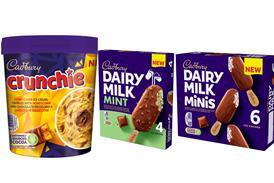
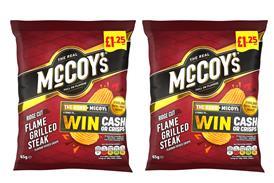
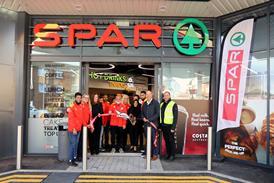










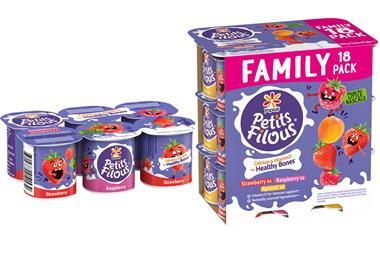



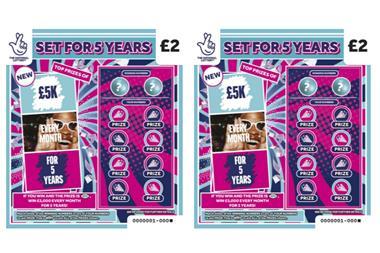
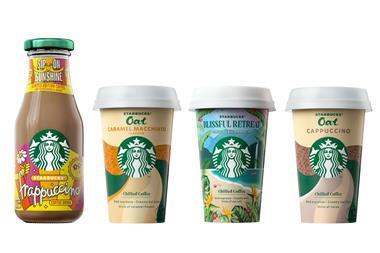
No comments yet